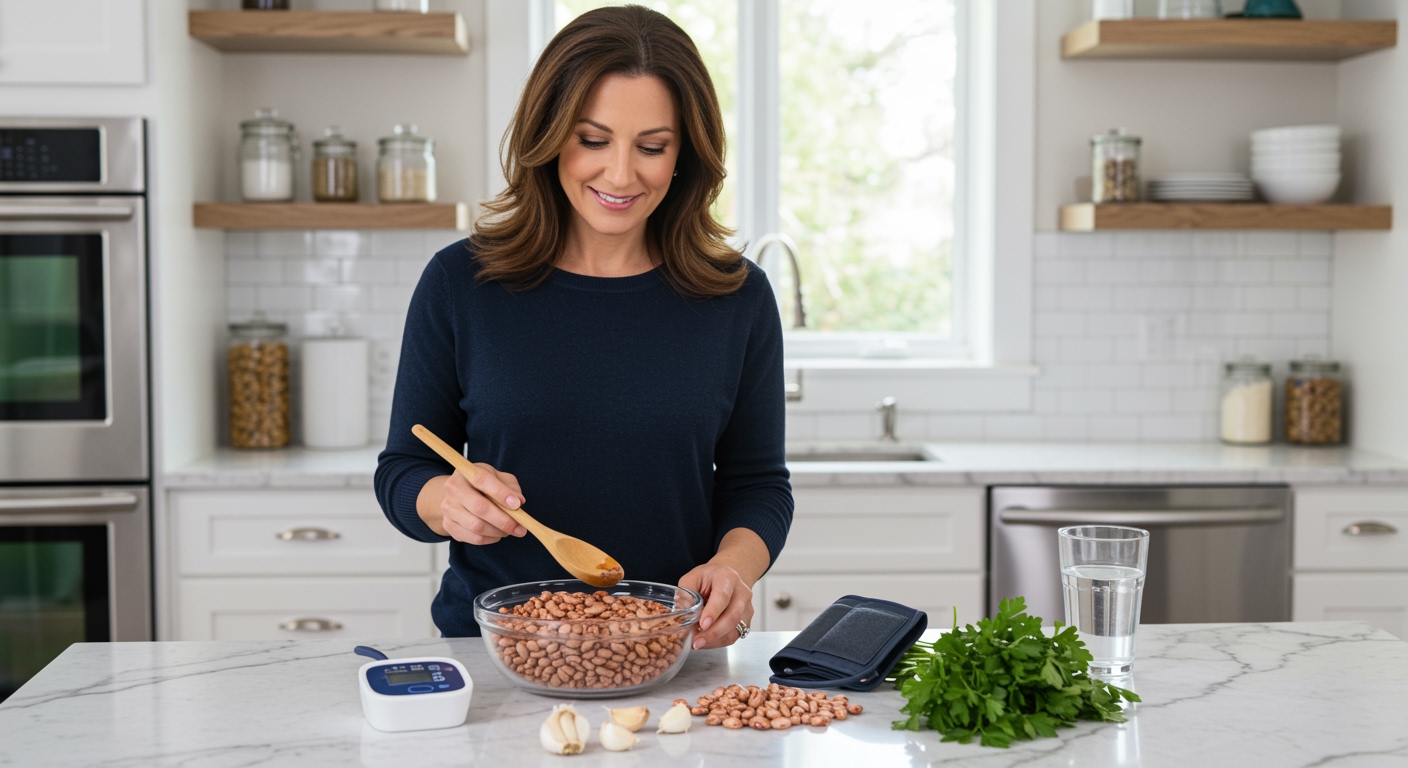✪ Key Takeaway: Yes, low blood pressure patients should eat more pinto beans because they provide essential minerals that support healthy circulation.
Introduction
Your doctor just told you that your blood pressure runs low, and now you wonder what foods might help.
You have heard conflicting advice about beans and blood pressure, leaving you confused about whether pinto beans will help or hurt your condition.
Hi, I am Abdur, your nutrition coach, and today I am going to explain exactly how pinto beans affect low blood pressure and why they should become your new best friend.
What Makes Pinto Beans Special For Blood Pressure?
Pinto beans pack a powerful nutritional punch that directly supports healthy blood pressure levels through multiple mechanisms.
One cup of cooked pinto beans delivers 746 milligrams of potassium, which is about 16% of your daily needs.
Potassium works like a natural blood pressure regulator by helping your kidneys remove excess sodium from your body.
When you have low blood pressure, your body needs adequate potassium to maintain proper fluid balance and support healthy circulation.
Pinto beans also contain magnesium, another mineral that helps relax blood vessel walls and supports proper heart rhythm.
The fiber content in pinto beans helps stabilize blood sugar levels, which prevents the blood pressure drops that often follow sugar crashes.
✪ Fact: One cup of pinto beans provides more potassium than a medium banana.
How Do Pinto Beans Actually Raise Blood Pressure?
Pinto beans help raise low blood pressure through their unique combination of complex carbohydrates and essential minerals.
The complex carbohydrates provide steady energy that prevents the blood sugar fluctuations that can worsen low blood pressure symptoms.
When your blood sugar drops rapidly, your blood pressure often follows, leaving you feeling dizzy and weak.
Pinto beans release glucose slowly into your bloodstream, maintaining steady energy levels and supporting consistent blood pressure.
The protein content in pinto beans also plays a crucial role by supporting the production of hormones that regulate blood pressure.
Additionally, the natural sodium content in pinto beans, while low, provides just enough to help maintain proper blood volume without causing harmful spikes.
✪ Pro Tip: Eat pinto beans with a small amount of sea salt to maximize their blood pressure benefits.
What About The Sodium Content Concern?
Many people worry that adding beans to their diet will increase their sodium intake, but this concern misses the bigger picture.
Fresh or dried pinto beans contain virtually no sodium when you prepare them at home without added salt.
Even when you add a moderate amount of salt during cooking, the potassium-to-sodium ratio remains heavily in favor of potassium.
This ratio is what matters most for blood pressure management, not the absolute sodium content.
Canned pinto beans do contain added sodium, but you can reduce this by rinsing them thoroughly before use.
For people with low blood pressure, a moderate sodium intake actually helps maintain proper blood volume and prevents dangerous drops.
The key is choosing whole food sources like pinto beans rather than processed foods loaded with refined salt.
✪ Note: Rinsing canned beans removes up to 40% of their sodium content.
How Much Should You Eat Daily?
The optimal amount of pinto beans for low blood pressure management depends on your individual needs and overall diet.
Most nutrition experts recommend eating half a cup to one cup of cooked pinto beans three to four times per week.
This amount provides substantial nutritional benefits without overwhelming your digestive system or causing uncomfortable gas.
If you are new to eating beans regularly, start with quarter-cup servings and gradually increase the amount over two weeks.
Your digestive system needs time to adapt to the increased fiber intake, and rushing this process can cause bloating and discomfort.
Spread your bean consumption throughout the week rather than eating large amounts in one sitting for better nutrient absorption.
Remember that pinto beans work best as part of a balanced diet that includes other blood pressure-supporting foods like leafy greens and whole grains.
✪ Pro Tip: Soak dried beans overnight and cook them with a bay leaf to reduce gas-causing compounds.
What Are The Best Ways To Prepare Them?
The way you prepare pinto beans can significantly impact their effectiveness for managing low blood pressure.
Cooking dried pinto beans from scratch gives you complete control over the sodium content and allows you to maximize their nutritional benefits.
Soak the beans overnight in plenty of water, then drain and rinse them before cooking in fresh water with aromatic herbs like bay leaves or thyme.
Add a small amount of sea salt during the last 15 minutes of cooking to enhance flavor without compromising the mineral balance.
Avoid adding acidic ingredients like tomatoes or vinegar during cooking, as they can make the beans tough and reduce nutrient absorption.
If you use canned beans for convenience, choose varieties with no added sugar and rinse them thoroughly to remove excess sodium.
Consider batch cooking a large pot of beans on weekends and storing portions in the refrigerator for quick meal preparation throughout the week.
✪ Fact: Properly cooked pinto beans can be stored in the refrigerator for up to five days.
The Bottom Line
Pinto beans are an excellent food choice for people with low blood pressure because they provide essential minerals and stable energy without harmful side effects.
Simple foods often hold the most powerful solutions for complex health challenges.
I would love to hear about your experience with pinto beans or any questions you might have about managing low blood pressure naturally, so please share your thoughts in the comments below.
References
At NutritionCrown, we use quality and credible sources to ensure our content is accurate and trustworthy. Below are the sources referenced in creating this article:
- Healthline: Pinto Beans Nutrition Facts and Health Benefits
- Vinmec: Diet for People with Low Blood Pressure
- Bean Institute: Reduce Risk of Hypertension
- NHLBI: DASH Eating Plan





